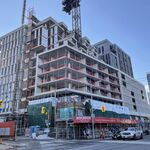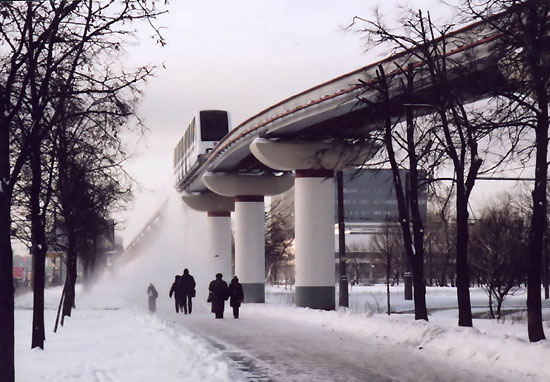TransitPolicyChanger
Active Member
Tell that to York Region, Brampton, Ottawa, etc etc etc. Granted the 905 GTA bus services didn't have very high ridership to begin with, so any increase would be seen as a success, but when you look at the anti-transit environment they have to work with (low density suburbia), they do pretty well for themselves. Imagine what the ridership would be in an area that is a more transit-friendly design.
If the 20 minute rush-hour trip to the subway was reduced to 10 minutes running 5-8 minute headways, I'd think that would get a lot more people to think twice about taking transit. This is of course based on the assumption that the subway system will have the capacity to handle the influx of new riders (which is the same knock for every transit plan that doesn't include capacity improvements leading into the downtown core).
The ideal application of BRT would be two-fold:
1) Use a hub and spoke concept in the outer 416, to create efficient, medium capacity, high frequency feeder routes to and from major transit hubs that have subway access (Finch West to Finch West Station would be a perfect example, or Finch East to Finch Station).
2) Use dedicated corridors for express crosstown travel (Finch Hydro Corridor, buses using the DVP, Lakeshore Blvd, etc).
BRT is a good lower cost option, but (at least in Toronto) people hate buses and realistically people hate LRT. This is mainly a result of a bad image (i.e. buses are always late, they are stuck in traffic, they have horribly bumpy rides, and so on). People don't want LRT, because they do not understand the operation of LRT vs Streetcars, and we all know what a lot of people think of Streetcars (i.e. unreliable, always stuck in traffic, etc.). All of this is compounded by Mayor Ford that is telling everyone that LRT is horrible and to cut these lines in favor of the best mode of public transit ever created the subway. So if you are looking at the City of Toronto I can see why people are saying BRT is a non-starter.
As gweed said, there are many very good applications of BRT for Toronto to compare to, but will people care? Will developers care? The entire Transit City vs BRT vs Subway debate is being driven by both public distaste for certain modes, but more importantly by the Mayor's promise to Scarborough.
As for gweed's comments about the corridors, i am doubtful these corridors would be transit friendly in any fashion. I believe a better use for these corridors would be to actually build a cross town avenue and let cars use it. Why? Then we may have some justification to actually take lanes on the adjacent roads (Steeles, Finch, or other) and make the dedicated LRT or BRT lanes and keep the transit lines where people will actually see and want to use them.






